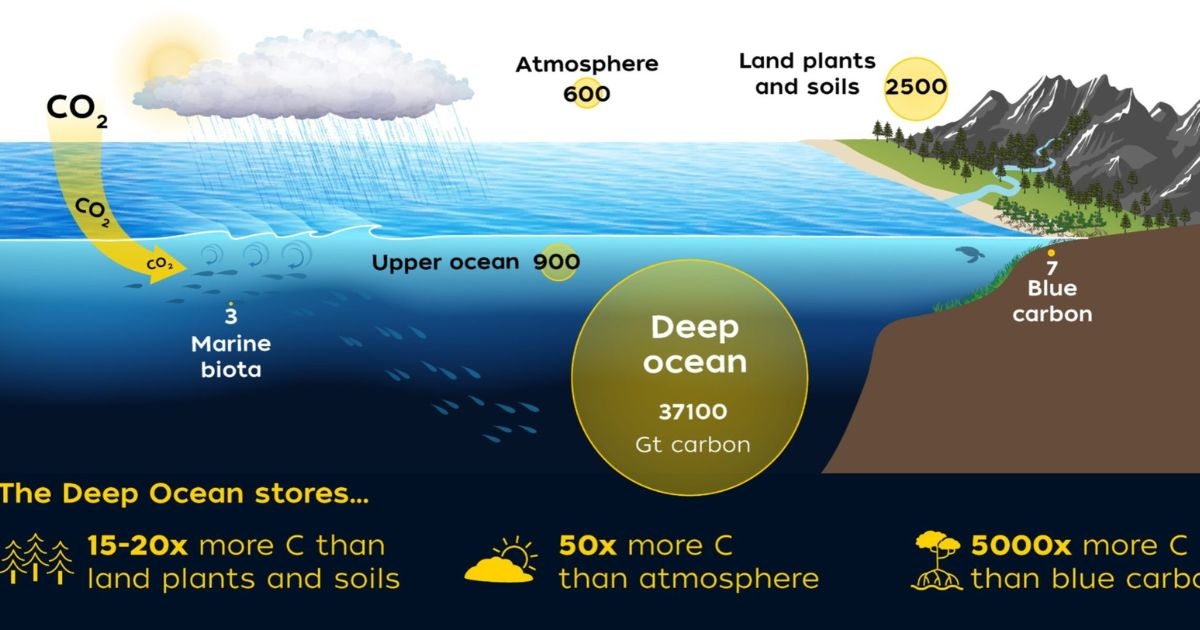WHOI Receives $8.5M in Department of Energy Funding for mCDR Research

The US Department of Energy has announced that Woods Hole Oceanographic Institution (WHOI) is one of the ten organizations selected for funding to accelerate the development of marine carbon dioxide removal (mCDR) technology.
mCDR techniques take advantage of the ocean’s natural ability to take up carbon dioxide from the atmosphere and store it for long periods of time. Together with emissions cuts and other carbon dioxide removal methods, mCDR techniques have the potential to remove hundreds of millions to billions of tons of heat-trapping carbon dioxide per year. WHOI’s funding from the DOE’s SEA-CO2 program will be divided between two different mCDR projects.
The first is the development of a system-on-a-chip to measure carbon in seawater. It will combine the capabilities of several existing commercial sensors into a single miniature chip, reducing the power requirements and significantly reducing costs. Unlike state-of-the-art sensors that are built in small batches by hand, this new system will permit fabrication and calibration at-scale using semiconductor manufacturing techniques, while still meeting or exceeding current accuracy and precision standards. This project received $3,738,960 and will be led by marine chemist David Nicholson, with collaborators at the University of Pennsylvania, University of Michigan, and Analog Devices.
The second project, led by marine chemist Ken Buesseler with partners at the University of South Carolina, Pacific Northwest National Laboratory, and MITRE Corp., will receive $4,802,245 to develop a sensor for autonomous underwater vehicles and scientific moorings that will measure the movement of particulate organic carbon through the ocean. The proposed sensor takes advantage of the naturally occurring radioactive isotope thorium-234, which provides a “clock”—much like carbon dating—that reveals the rate at which carbon-rich detritus sinks from the surface to the deep ocean. Unlike current methods that require multi-step laboratory analysis, the proposed sensor won’t require ship-based sample preparation and will be able to autonomously analyze large volumes of water in the ocean for a year or more.
“It’s readily apparent that we will not be able to solve the climate crisis by cutting greenhouse gas emissions alone,” said WHOI President and Director Peter de Menocal. “We need to use all of the tools available to us to draw down and sequester emissions already in the atmosphere, and with the ocean already doing that for us as part of Earth’s natural climate cycle, it only makes sense that we should look to the ocean for solutions. We are grateful to the Department of Energy for their commitment and foresight in helping us tackle the many challenging questions that surround this fundamental societal problem.”
The funding for these projects stems from the Biden-Harris Administration’s efforts to tackle the climate crisis and achieve a net-zero emissions economy by 2050.
“With critical funding from DOE, project teams from across the country will develop groundbreaking new technologies to cut emissions that will help combat the climate crisis while reinforcing America’s global leadership in the clean energy industries of the future,” said U.S. Secretary of Energy Jennifer M. Granholm.
Other organizations receiving funding for mCDR projects include Bigelow Laboratory for Oceanic Sciences, GE Research, and University of Colorado. More information and complete project descriptions for the teams receiving funding can be found on the ARPA-E website.

